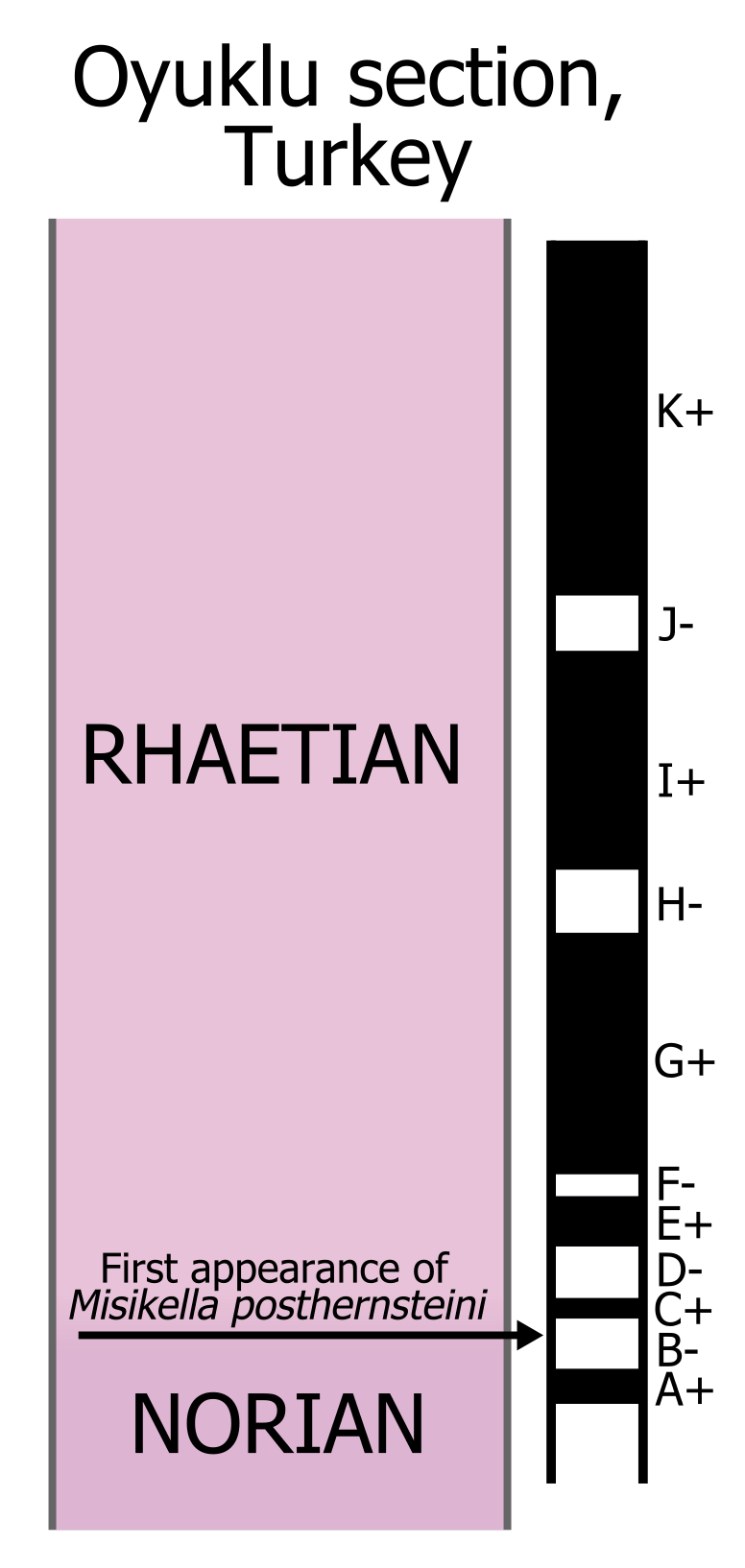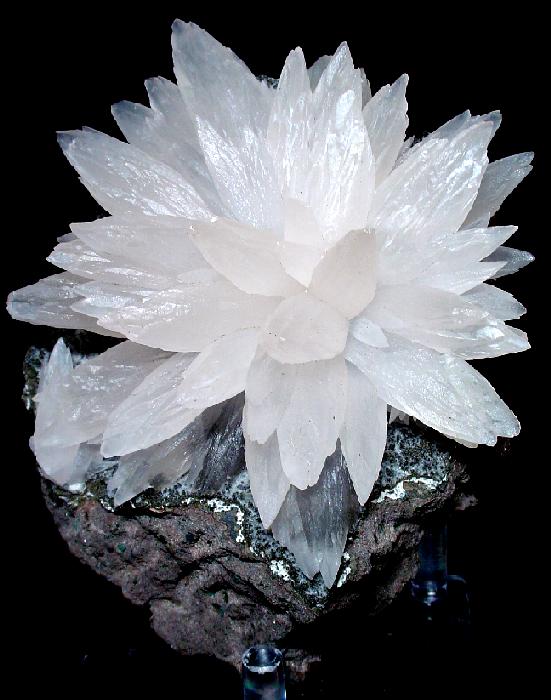|
Platykotta Akaina
''Platykotta akaina'' is a species of decapod crustacean from the Triassic of the United Arab Emirates. It is the oldest known fossil from the infraorder Anomura, and is most closely related to '' Eocarcinus praecursor''. Stratigraphy The holotype of ''P. akaina'' was found in the United Arab Emirates on the Musandam Peninsula – the peninsula which separates the Persian Gulf from the Gulf of Oman. From the Permian to the Cretaceous, the area was near the shore of the Tethys Sea, which produced carbonate sedimentary rocks. The strata that contained ''Platykotta'' were part of the Ghalilah Formation, of Norian–Rhaetian age. These rocks contain extensive networks of burrows, and various other fossils, including bivalves of the families Megalodontidae and Wallowaconchidae, brachiopods, crinoids, sponges and corals. The holotype was found at approximately and has been deposited in the Natural History Museum of Geneva, Switzerland. Description ''Platykotta'' is characterised by ... [...More Info...] [...Related Items...] OR: [Wikipedia] [Google] [Baidu] |
Animal
Animals are multicellular, eukaryotic organisms in the Biology, biological Kingdom (biology), kingdom Animalia (). With few exceptions, animals heterotroph, consume organic material, Cellular respiration#Aerobic respiration, breathe oxygen, have myocytes and are motility, able to move, can reproduce sexually, and grow from a hollow sphere of Cell (biology), cells, the blastula, during embryonic development. Animals form a clade, meaning that they arose from a single common ancestor. Over 1.5 million extant taxon, living animal species have been species description, described, of which around 1.05 million are insects, over 85,000 are molluscs, and around 65,000 are vertebrates. It has been estimated there are as many as 7.77 million animal species on Earth. Animal body lengths range from to . They have complex ecologies and biological interaction, interactions with each other and their environments, forming intricate food webs. The scientific study of animals is known as ... [...More Info...] [...Related Items...] OR: [Wikipedia] [Google] [Baidu] |
Gulf Of Oman
The Gulf of Oman or Sea of Oman ( ''khalīj ʿumān''; ''daryâ-ye omân''), also known as Gulf of Makran or Sea of Makran ( ''khalīj makrān''; ''daryâ-ye makrān''), is a gulf in the Indian Ocean that connects the Arabian Sea with the Strait of Hormuz, which then runs to the Persian Gulf. It borders Iran and Pakistan on the north, Oman on the south, and the United Arab Emirates on the west. Extent The International Hydrographic Organization defines the limits of the Gulf of Oman as follows: Exclusive economic zone Exclusive economic zones in Gulf of Oman: Bordering countries Coastline length of bordering countries: # - 850 km coastline # - 750 km coastline # - 50 km coastline # - 50 km coastline Alternative names The Gulf of Oman historically and geographically has been referred to by different names by Arabian, Iranian, Indian, Pakistani, and European geographers and travelers, including Makran Sea and Akhzar Sea. # Makran Sea # A ... [...More Info...] [...Related Items...] OR: [Wikipedia] [Google] [Baidu] |
Crinoid
Crinoids are marine invertebrates that make up the class Crinoidea. Crinoids that remain attached to the sea floor by a stalk in their adult form are commonly called sea lilies, while the unstalked forms, called feather stars or comatulids, are members of the largest crinoid order, Comatulida. Crinoids are echinoderms in the phylum Echinodermata, which also includes the starfish, brittle stars, sea urchins and sea cucumbers. They live in both shallow water and in depths of over . Adult crinoids are characterised by having the mouth located on the upper surface. This is surrounded by feeding arms, and is linked to a U-shaped gut, with the anus being located on the oral disc near the mouth. Although the basic echinoderm pattern of fivefold symmetry can be recognised, in most crinoids the five arms are subdivided into ten or more. These have feathery pinnules and are spread wide to gather planktonic particles from the water. At some stage in their lives, most crinoids have a sho ... [...More Info...] [...Related Items...] OR: [Wikipedia] [Google] [Baidu] |
Brachiopod
Brachiopods (), phylum (biology), phylum Brachiopoda, are a phylum of animals that have hard "valves" (shells) on the upper and lower surfaces, unlike the left and right arrangement in bivalve molluscs. Brachiopod valves are hinged at the rear end, while the front can be opened for feeding or closed for protection. Two major categories are traditionally recognized, articulate and inarticulate brachiopods. The word "articulate" is used to describe the tooth-and-groove structures of the valve-hinge which is present in the articulate group, and absent from the inarticulate group. This is the leading diagnostic skeletal feature, by which the two main groups can be readily distinguished as fossils. Articulate brachiopods have toothed hinges and simple, vertically oriented opening and closing muscles. Conversely, inarticulate brachiopods have weak, untoothed hinges and a more complex system of vertical and oblique (diagonal) muscles used to keep the two valves aligned. In many brachio ... [...More Info...] [...Related Items...] OR: [Wikipedia] [Google] [Baidu] |
Megalodontidae
Megalodontidae is an extinct family of bivalve molluscs that reportedly lived from the Devonian to the Jurassic period. Nomenclature A family of insects was also previously called "Megalodontidae", containing the sawfly genus '' Megalodontes''. In order to remove the homonymy, that family has been renamed Megalodontesidae. Genera *†'' Conchodon'' *†'' Gemmellarodus'' di Stefano, 1912 *†''Megalodon ''Otodus megalodon'' ( ; meaning "big tooth"), Common name, commonly known as megalodon, is an extinction, extinct species of giant mackerel shark that lived approximately 23 to 3.6 million years ago (Mya), from the Early Miocene to the Earl ...'' Sowerby, 1827 *†'' Neomegalodon'' Guembel, 1864 *†'' Pachyrisma'' *†'' Protomegalodon'' *†'' Pterocardia'' Bayan, 1874 *†'' Quemocuomegalodon'' Yao et al. 2003 *†'' Rhaetomegalodon'' *†'' Triadomegalodon'' Vegh-Neubrandt, 1974 Gallery References Prehistoric bivalve families Devonian first appearances ... [...More Info...] [...Related Items...] OR: [Wikipedia] [Google] [Baidu] |
Bivalvia
Bivalvia () or bivalves, in previous centuries referred to as the Lamellibranchiata and Pelecypoda, is a class (biology), class of aquatic animal, aquatic molluscs (marine and freshwater) that have laterally compressed soft bodies enclosed by a calcified exoskeleton consisting of a hinged pair of half-bivalve shell, shells known as valve (mollusc), valves. As a group, bivalves have no head and lack some typical molluscan organs such as the radula and the odontophore. Their gills have evolved into ctenidium (mollusc), ctenidia, specialised organs for feeding and breathing. Common bivalves include clams, oysters, Cockle (bivalve), cockles, mussels, scallops, and numerous other family (biology), families that live in saltwater, as well as a number of families that live in freshwater. Majority of the class are benthic filter feeders that bury themselves in sediment, where they are relatively safe from predation. Others lie on the sea floor or attach themselves to rocks or other h ... [...More Info...] [...Related Items...] OR: [Wikipedia] [Google] [Baidu] |
Burrow
file:Chipmunk-burrow (exits).jpg, An eastern chipmunk at the entrance of its burrow A burrow is a hole or tunnel excavated into the ground by an animal to construct a space suitable for habitation or temporary refuge, or as a byproduct of Animal locomotion, locomotion. Burrows provide a form of shelter against predation and exposure to the elements, and can be found in nearly every biome and among various biological interactions. Many animal species are known to form burrows. These species range from small amphipods, to very large vertebrate species such as the polar bear. Burrows can be constructed into a wide variety of substrates and can range in complexity from a simple tube a few centimeters long to a complex network of interconnecting tunnels and chambers hundreds or thousands of meters in total length; an example of the latter level of complexity, a well-developed burrow, would be a rabbit Warren (burrow), warren. Vertebrate burrows A large variety of vertebrates constru ... [...More Info...] [...Related Items...] OR: [Wikipedia] [Google] [Baidu] |
Rhaetian
The Rhaetian is the latest age (geology), age of the Triassic period (geology), Period (in geochronology) or the uppermost stage (stratigraphy), stage of the Triassic system (stratigraphy), System (in chronostratigraphy). It was preceded by the Norian and succeeded by the Hettangian (the lowermost stage or earliest age of the Jurassic). The base of the Rhaetian lacks a formal Global Boundary Stratotype Section and Point, GSSP, though candidate sections include Steinbergkogel section, Steinbergkogel in Austria (since 2007) and Pignola-Abriola section, Pignola-Abriola in Italy (since 2016). The end of the Rhaetian (and the base of the overlying Hettangian Stage) is more well-defined. According to the current International Commission on Stratigraphy, ICS (International Commission on Stratigraphy) system, the Rhaetian ended ± 0.2 Ma (million years ago). In 2010, the base of the Rhaetian (i.e. the Norian-Rhaetian boundary) was voted to be defined based on the first appearance of ''Mi ... [...More Info...] [...Related Items...] OR: [Wikipedia] [Google] [Baidu] |
Norian
The Norian is a division of the Triassic geological period, Period. It has the rank of an age (geology), age (geochronology) or stage (stratigraphy), stage (chronostratigraphy). It lasted from ~227.3 to Mya (unit), million years ago. It was preceded by the Carnian and succeeded by the Rhaetian. Stratigraphic definitions The Norian was named after the Noric Alps in Austria. The stage was introduced into scientific literature by Austrian geologist Johann August Georg Edmund Mojsisovics von Mojsvar, Edmund Mojsisovics von Mojsvar in 1869. The Norian Stage begins at the base of the ammonite biozones of ''Klamathites, Klamathites macrolobatus'' and ''Stikinoceras, Stikinoceras kerri'', and at the base of the conodont biozones of ''Metapolygnathus, Metapolygnathus communisti'' and ''Metapolygnathus, Metapolygnathus primitius''. A global reference profile for the base (a GSSP) had in 2009 not yet been appointed. The top of the Norian (the base of the Rhaetian) is at the first appeara ... [...More Info...] [...Related Items...] OR: [Wikipedia] [Google] [Baidu] |
Sedimentary Rock
Sedimentary rocks are types of rock (geology), rock formed by the cementation (geology), cementation of sediments—i.e. particles made of minerals (geological detritus) or organic matter (biological detritus)—that have been accumulated or deposited at Earth's surface. Sedimentation is any process that causes these particles to settle in place. Geological detritus originates from weathering and erosion of existing rocks, or from the solidification of molten lava blobs erupted by volcanoes. The geological detritus is transported to the place of deposition by water, wind, ice or Mass wasting, mass movement, which are called agents of denudation. Biological detritus is formed by bodies and parts (mainly shells) of dead aquatic organisms, as well as their fecal mass, suspended in water and slowly piling up on the floor of water bodies (marine snow). Sedimentation may also occur when dissolved minerals precipitate from aqueous solution, water solution. The sedimentary rock cover of ... [...More Info...] [...Related Items...] OR: [Wikipedia] [Google] [Baidu] |
Carbonate Rock
Carbonate rocks are a class of sedimentary rocks composed primarily of carbonate minerals. The two major types are limestone, which is composed of calcite or aragonite (different crystal forms of CaCO3), and Dolomite (rock), dolomite rock (also known as dolostone), which is composed of Dolomite (mineral), dolomite (CaMg(CO3)2). They are usually Dunham classification, classified on the basis of texture and grain size. Importantly, carbonate rocks can exist as metamorphic and igneous rocks, too. When recrystallized carbonate rocks are Metamorphic rock, metamorphosed, marble is created. Rare igneous rock, igneous carbonate rocks even exist as Intrusive rock, intrusive carbonatites and, even rarer, there exists volcanic carbonate lava. Carbonate rocks are also crucial components to understanding Geological history of Earth, geologic history due to processes such as diagenesis in which carbonates undergo compositional changes based on kinetic effects. The correlation between this compo ... [...More Info...] [...Related Items...] OR: [Wikipedia] [Google] [Baidu] |







